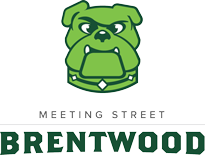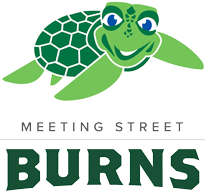BY BENJAMIN NAVARRO
With all the talk of hurricanes, earthquakes and nuclear weapons in the hands of lunatics, it’s easy to feel like good news is hard to find. Well, sometimes you just need to look right under your nose.
First, let’s start with a question: Why has South Carolina been perennially at or near the bottom of the country in student outcomes? Our state has certainly been faced with its share of educational challenges, especially with our relatively large proportion of under-resourced kids. Are these students simply not able to learn on par with their wealthier counterparts because of their circumstances — factors such as family incomes, transiency, and lack of access to health care, employment and mental health services? Or is it a failure of our education system? If you are like most people and say some of both, you may be surprised by the recent data coming out of Meeting Street Schools.
We recently began our tenth year operating Meeting Street Academy (MSA), an independent downtown school serving 244 under-resourced kids in grades Pre-K through five who would otherwise be attending a failing school. As a reminder — or for those new to our efforts — our two core beliefs are that every child can learn, and every child deserves an opportunity to receive a world class education regardless of the neighborhood they come from. We set out on a mission a decade ago to create schools where these beliefs could become reality.
After a tremendous amount of hard work by our amazing teachers and administrators, and after spending lots of our own money, we are thrilled to report the latest evidence proving that our mission is indeed being accomplished. Yes, it takes some extra money, and yes it takes extraordinary focus, innovation and accountability of everyone involved; but look at our recent results and they will blow your mind. To be clear, we are still a work in progress, and we still have areas where we can and should do better. But when I step back and consider the big picture … Wow!
By way of background, we use a standardized testing regime called Measures of Academic Progress (MAP), a rigorous test used across Charleston County School District (CCSD) and by approximately 15,000 elementary schools around the country. We consider two primary measures: how did our students score on MAP at the end of the school year, and how much did our students grow academically over the course of the year? So, if I asked you to take a guess at how these MAP scores would compare between an elementary school filled with kids from one of Charleston’s most affluent areas, and our school that’s filled with kids from under-served areas around Charleston, how would you guess they would compare?
Well in fact, in the spring of 2017, MSA students scored on par with Sullivan’s Island Elementary and Mount Pleasant Academy — two of the most affluent and highest-performing schools in the district — achieving a median MAP score of 83rd percentile for reading and math combined! And in terms of growth for the academic year, MSA students grew at a median rate of 1.35 years, outpacing these wealthy district schools by a measurable amount. Whaaat? While skeptics may claim that MSA cherry picks its students, the truth is that we don’t use aptitude criteria for acceptance. Our only requirement is that someone from the family — be it a parent, grandparent or other caregiver — partners with us in supporting what’s required for their child to learn.
But there’s even more to the story. Three years ago we took everything we learned at MSA, and working with CCSD, established a public Title One school in North Charleston’s Dorchester Corridor — an area that has been the poster child for failing schools for as long as anyone can remember. Meeting Street Elementary @ Brentwood (MSE@B) is a public Title One school where, as with all public neighborhood schools, all students who live in the enrollment zone can attend. MSE@B has just begun its fourth year in operation, with an enrollment of 590 students in grades Pre-K-3 through fourth grade.
So how did MSE@B fare last spring? These students achieved a median MAP score in the 68th percentile, far surpassing the 36th percentile median score of other North Charleston Title One schools and the national median of 50th percentile. And MSE@B’s students grew at a median rate of 1.25 years, while other North Charleston Title One students actually lost ground — advancing only 0.92 years’ worth for the full year of instruction.
Wait a second … Does this mean that we could and should be doing so much better in the rest of our schools serving under-resourced kids? That the status quo of Charleston’s schools is unacceptable? That we must demand better?
I guess that’s for the reader to decide. We know what we think. And we’re putting our money where our mouth is.
Benjamin Navarro is the founder and CEO of Charleston-based Sherman Financial Group and the founder of Meeting Street Schools.
Op-Ed appeared in The Post and Courier on 9-23-17







